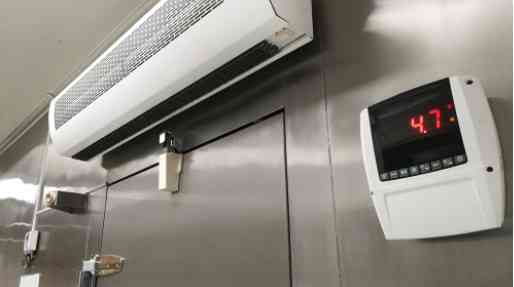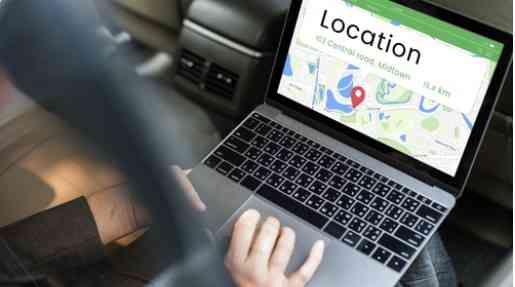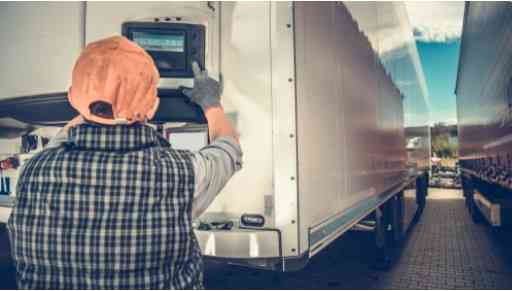Internet of Things
Overview
The Internet of Things – also referred to as IoT, is a network of interconnected devices capable of collecting and exchanging data. This model boasts interconnected devices designed to sense, collect, and send data to a repository over the internet, and can in turn be accessed by other internet capable devices. The evolution and convergence of IoT technology typically eliminate the need for repetitive tasks via automation without requiring human-to-human or human-to-computer interaction.

Let's Unpack That
The following key terms help define IoT by introducing the various tools available through its platform.
Sensors – devices that help in collecting very minute data from the surrounding environment. All of this collected data can have various degrees of complexity ranging from a simple temperature monitoring sensor to a complex full-video feed. A device can have multiple sensors that can bundle together to do more than merely sense action. For example, a smartphone is a device that has multiple sensors such as GPS, accelerometer, and camera; but the phone is built for more than sensing.
Transport medium – Communication platforms that sensors utilize to transfer the data captured such as cellular networks, satellite networks, Wi-Fi, Bluetooth, wide-area networks (WAN), low power wide area network, and many more. Every option we choose has some specifications and trade-offs between power consumption, range, and bandwidth. So, choosing the best connectivity option in the IoT system is important.
Cloud Orchestrators – The software that performs processing on the acquired data. This can range from something very simple, such as checking that the temperature reading on an AC or heater is within an acceptable range. It can sometimes also be very complex, such as identifying objects (for example, intruders in your house) using computer vision on video. Situationally, user interaction is required. For example, sensors in a home that indicate a fire or intruder alert are flagged.
Notifications – Alarms or alerts generated for users on pertinent data typically through phones, emails, and/or texts. Certain IoT systems will also have a user interface designed for managing the sensors and responding to notifications.
Why Choose Internet of Things?
- Promotes efficient resource utilization
- Minimizes human efforts in many days to day aspects
- Reduces the cost of production and maximizes the returns
- Makes analytical decisions quickly and accurately
- Boosts product marketing in real-time
- Provides a better client experience
- Guarantees high-quality data and secured processing
- Furthers compliance and regulatory needs
- Offers the ability to remotely control and adjust environments

Why Work With Us?

- We offer a consultative perspective that can highly benefit your business
- Our team will observe your company to identify areas which could benefit from IoT
- We will architect the proper solution to meet your enterprise’s unique needs
- We will use those solutions as the basis for our research to source the right supplier(s)
- We will direct the implementation and deployment
- We maintain our professional relationship post implementation to ensure you and your team have an excellent customer experience
Is Internet of Things Right for My Organization?
In a world dominated by digital technology, IoT plays a prominent role in our lives. It has created an ecosystem that links many systems that invariably interconnect for various tasks. These devices can derive meaningful information using commands based on data analytics, as well as share the data on the cloud and safely analyze as a means to give the required output. IoT has taken over the manual system of running businesses. It now plays the role of managing the internal process and operations, creating a high level of convenience for each task.
IoT Technology opens the door for tracking individuals, places, and items within your organization. Whether it is the temperature of refrigeration, or the movement of vehicles, devices, or people. IoT can monitor and manage different points of interest within your organization. In the case of some industries, such as health care facilities and transportation, IoT is critical in supporting businesses in meeting federal compliances.

Things to Consider

- Companies that don’t have a lot of need for deep analytics or automation may not require IoT. However, most companies do.
- IoT is a term often used to describe a number of solutions. Almost anything that can be managed from a UI over the internet is now labeled as IoT. Working with a true enterprise class IoT solution is recommended for companies.
- Unlike traditional enterprise solutions, it’s harder to find a “turnkey” IoT solution that fits your company perfectly. The best approach is to understand the problem that needs to be solved. Various IoT suppliers can quickly custom design an IoT solution to fit your needs.
- We can help you understand the capabilities of the IoT solution. There are many IoT options of differing levels of complexity. For example, if a user is having concerns with security, they could have an IoT camera installed in their home, enabling them to check the video recordings and feeds through a web server. This is a simple solution. A more complex solution may require input from the user, and the decision from the user can have lasting impacts. For example, if a user detects some changes in their refrigerator, they could implement IoT which allows them to remotely adjust the temperature via their phone. There are also cases where some actions perform automatically. By establishing and implementing some predefined rules, the entire IoT system can adjust settings independently. The system can also generate an alert to authorities if intruders are sensed, regardless of if the owner of the house is present.
Frequently Asked Questions
We will devote all necessary resources to determine if the application of IoT will have an impact on your business. That will include engineering and sales resources to best determine what provider and how great a benefit you would enjoy from deploying IoT.
No, data centers are audited and depending on the results they are placed in a tiered rating scale. There are 4 levels of this scale and depending on your needs to meet a compliance regulation or uptime will determine the type of data center that will meet your requirements. The 4 tiers are:
- Tier 1 – 99.671% Uptime, Lacks Redundancies
- Tier 2 – 99.741% Uptime, Power and Cooling Redundancy
- Tier 3 – 99.982% Uptime, Multiple Power Sources, Uplinks, and more
- Tier 4 – 99.995% Uptime, Full Redundancy, Error Tolerant
You will have access to temperature and humidity for room environments, coolers and refrigeration unit, trucks and drivers, ability to track people, places and things no matter where they are and where they are moving to, turn on pumps, change thermostats, turn on lights, track children, etc. As you can see the possibilities are endless. The real question is what do you need to track and monitor and how would that change your business and ultimately save you time and money?
Depending on the carrier, data centers can be very secure. Much more secure then if you were to try and build out your own. Typically, you cannot get into the data center without being let in, or a key card.
- Once in the data center, you are greeted by security and they will check to see if you have access into the data center.
- Once you are checked in by security, a guard will escort you to your environment.
- To get there, the guard will have multifactor access points and there are man traps set up all through out the data center. Also, there are cameras in all the zones watching everything at all times and being recorded and backed up for at least 90 days.
Lastly, most data centers have barriers around all access points and ballistic glass
The chosen supplier will deploy a portal for you to view the information, set triggers and alerts and make changes to your system.
This depends on the carrier, but most will have remote hands access. Basically, is the general name for a service offered by colocation providers that allows customers to delegate IT management and maintenance tasks within a colocation facility to technicians hired by the provide. A lot of times the Data Center provider will have additional cloud services, like aaS offerings, managed servers, access to hyperscalers, etc that allow their clients to eventually migrate some or all of their services to the cloud.
All data is available in a real time environment.
Depends on the catastrophe and which tier data center you are in. Data Centers plan for the absolute worse and build redundancy around those events. The basics to run a data center are power and bandwidth. Todays data centers try to make everything N+1 (means that there is a power backup in place should any single system component fail).
So, if power from the street is cut off for some reason, they turn to battery backup and then diesel generators. Depending on the data center, they can run up to 48 hours without fueling. As for bandwidth, they build out 2 meet me rooms and have major carriers connecting in. Most tier 3 data centers boast that they have never lost power or connectivity.